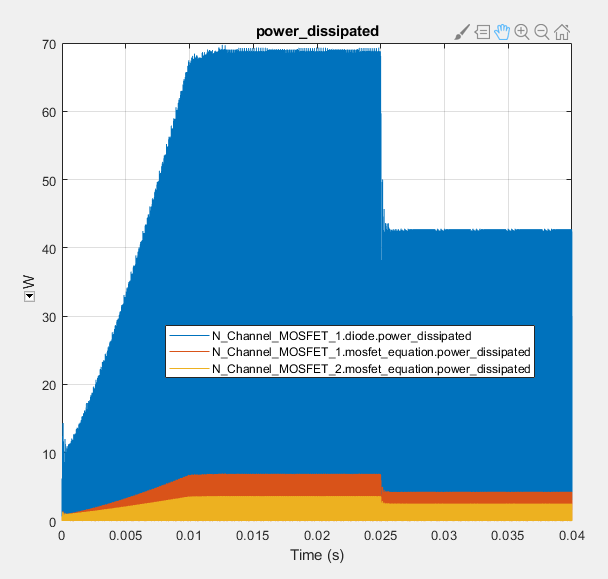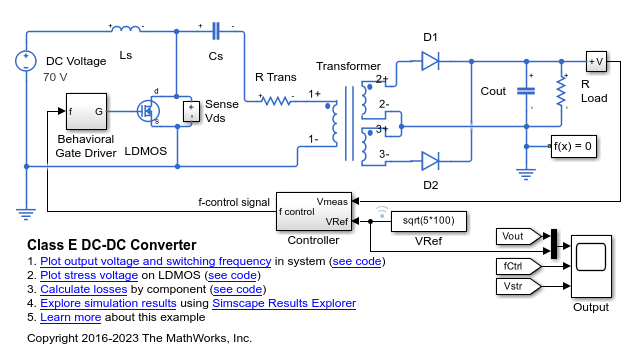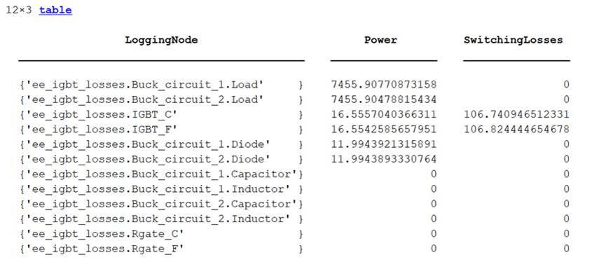ee_getPowerLossSummary
Calculate dissipated power losses and switching losses
Syntax
Description
lossesTable = ee_getPowerLossSummary(node)
Before you call this function, you must have the simulation log variable in your
current workspace. Create the simulation log variable by simulating the model with
data logging turned on, or load a previously saved variable from a file. If
node is the name of the simulation log variable, then the
table contains the data for all semiconductor blocks in the model. If
node is the name of a node in the simulation data tree,
then the table contains the data only for the blocks within that node.
Checking dissipated power is useful for verifying that circuit components are
operating within their working envelopes. All blocks in the Semiconductor Devices
library, as well as some other blocks, have an internal variable called
power_dissipated, which represents the instantaneous power
dissipated by the block. When you log simulation data, the time-value series for
this variable represents the power dissipated by the block over time. You can view
and plot this data using the Simscape™ Results Explorer.
Note
The power_dissipated internal variable does not report
dynamic losses incurred from semiconductor switching or magnetic
hysteresis.
Three different variables, lastTurnOnLoss,
lastTurnOffLoss, and
lastReverseRecoveryLoss report the switching
losses.
Switching losses are losses associated with the transition of the semiconductor
switch from its on-state to its off-state and viceversa, and also with the energy
dissipated during a reverse recovery event. They are frequency dependent. The
ee_getPowerLossSummary function averages the switching
losses over time and expresses them in watts.
These blocks in the Semiconductors & Converters library support the calculation of switching losses and reverse recovery losses, when applicable:
The ee_getPowerLossSummary function calculates average losses
for each block that has a power_dissipated variable. Some blocks
have more than one power_dissipated variable, depending on their
configuration. For example, the N-Channel MOSFET block has separate
power_dissipated logging nodes for the MOSFET, the gate
resistor, and for the source and drain resistors if they have nonzero resistance
values. The function sums all these losses and provides the power loss value for the
whole block, averaged over simulation time.
lossesTable = ee_getPowerLossSummary(node,startTime,endTime)startTime and endTime represent the
start and end of the time interval for averaging the power losses. If you omit these
two input arguments, the function averages the power losses over the whole
simulation time.
Note
Depending on the solver and data logging configuration, the node Start time and the node Stop time can be different from the simulation Start time and the simulation Stop time.
Examples
Input Arguments
Output Arguments
Version History
Introduced in R2015a



